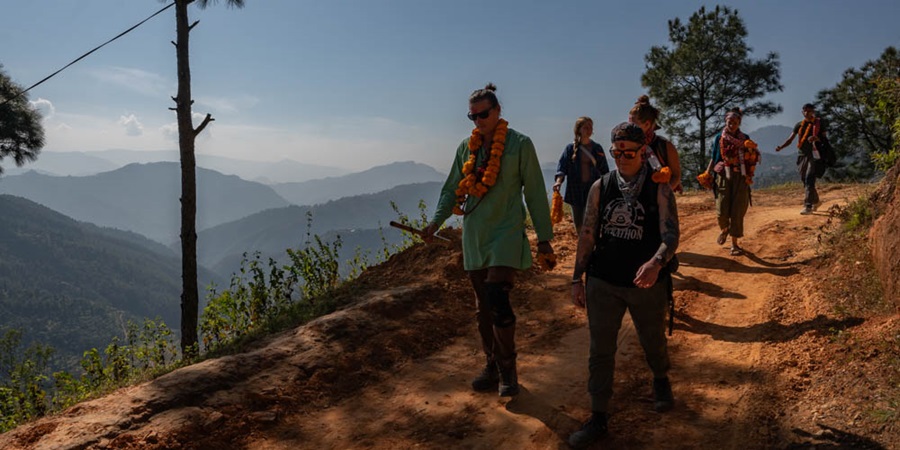Nestled in the majestic Himalayas, Nepal is a treasure trove for trekkers. Its varied landscapes, from verdant valleys to towering peaks, make it an ideal destination for everyone from novices to seasoned mountaineers. Understanding the best trekking season in Nepal is key to a fulfilling and safe trekking experience. This guide delves into each season, highlighting their unique attributes and challenges to help you plan your perfect Himalayan adventure.
1. Autumn (September to November): Best trekking season in Nepal
Autumn is often hailed as the best trekking season in Nepal. It offers a blend of stable weather, clear skies, and a vibrant natural palette.
- Stable Weather and Clear Skies: The post-monsoon period clears the skies, unveiling the Himalayan grandeur in full glory. The weather is consistently stable, minimizing the risks of storms and heavy rainfall.
- Balanced Temperatures: Autumn strikes an ideal temperature balance, not too hot in the lower regions nor too cold in the higher altitudes, ensuring a comfortable trek.
- Cultural Festivities: This season coincides with major Nepalese festivals like Dashain and Tihar, allowing trekkers to immerse in Nepal’s rich cultural tapestry.
2. Winter (December to February): The Tranquil Trekking Experience
Winter in Nepal is marked by colder conditions, especially higher elevations, but it offers unique trekking experiences.
- Snowy High Elevations: Trails above 4,000 meters are often snow-clad, presenting challenges for less experienced trekkers.
- Mesmerizing Winter Scenery: The winter landscape is breathtaking, with its snow-covered mountains and clear blue skies.
- Solitude on Trails: With fewer trekkers, winter provides a more peaceful and reflective experience.
3. Spring (March to May): A Symphony of Colors
Spring is another favourite among trekkers, transforming Nepal into a colourful paradise.
- Warm and Moderate Weather: The temperatures are warm at lower elevations and pleasant at higher ones, ideal for trekking.
- Floral Extravaganza: The hillsides are adorned with blooming rhododendrons and other wildflowers, creating a picturesque setting.
- Wildlife Sightings: As animals emerge from hibernation, spring becomes an excellent season for wildlife enthusiasts.
4. Summer (June to August): Trekking in the Rain Shadow
The monsoon season, while challenging for trekking, has its allure, especially in specific regions.
- Rain Shadow Areas: Regions like Tsum Valley, Upper Mustang, and Dolpo, lie in the Himalayan rain shadow and receive less rainfall, making them ideal for summer trekking.
- Verdant Landscapes: The monsoon turns Nepal’s landscapes into lush, green havens, perfect for nature photography.
- Adventure for the Experienced: Trekking in the rain offers unique challenges and can be a thrilling experience for seasoned trekkers.
Choosing Your Ideal Trekking Season
Selecting the best trekking season in Nepal depends on your preferences, trekking goals, and readiness for varying conditions. Whether it’s the stable and precise autumn, the serene winter, the vibrant spring, or the adventurous summer, each season in Nepal offers a distinct trekking experience.
Nepal’s diverse trekking seasons provide a spectrum of experiences – from the autumnal colours to the pristine winter landscapes, the springtime blooms, to the verdant summers. Each trekking journey in Nepal is not just a physical adventure but a journey through nature’s magnificence, leaving you with enduring memories and stories to tell.




